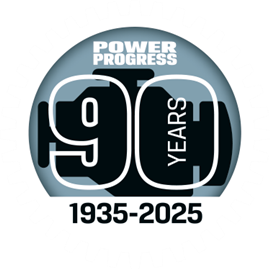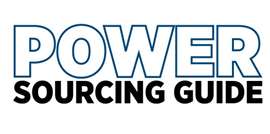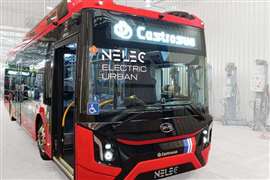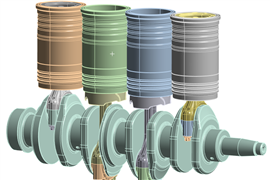Read this article in 中文 Français Deutsch Italiano Português Español
Eaton breaks new ground on emissions technology
08 January 2025
A review of current and future emissions reduction tech from Eaton, together with a plan for how the approach to emissions regulations might change.
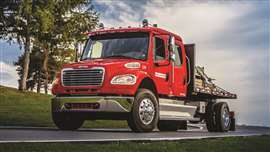 Eaton and BAE Systems have tested an integrated electric drive for mid- and heavy-duty trucks. (Photo: BAE Systems)
Eaton and BAE Systems have tested an integrated electric drive for mid- and heavy-duty trucks. (Photo: BAE Systems)
Eaton Corporation has a massive portfolio of products covering virtually any power application, ranging from energy storage systems through to backup power and vehicle drivetrains.
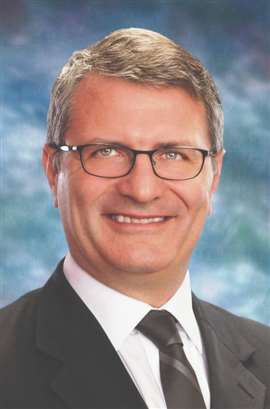 “As a company, Eaton believes that governments should outline specific environmental targets.” Dr. Mihai Dorobantu, Eaton Corporation. (Photo: Eaton)
“As a company, Eaton believes that governments should outline specific environmental targets.” Dr. Mihai Dorobantu, Eaton Corporation. (Photo: Eaton)
In a recent interview with PPI, Dr. Mihai Dorobantu, director of Advanced Technology at Eaton, explained that virtually all the programs operated by his division over the past 15 years have involved ways to reduce engine emissions. This has primarily focused on CO2 and NOx emissions, with the intent of reducing the impact of these greenhouse gases (GHG) on climate and air quality.
“It’s not by chance that we have suddenly appeared with these emissions solutions,” said Dorobantu. “If what you put in at the front end of the process are ways to reduce emissions, 15 years later it’s no big surprise that we have this portfolio of technologies, products with these technologies embedded within them, intended to address engine emissions.”
Whether it’s passenger cars or commercial vehicles, Eaton can provide a complete emissions reduction solution – in the case of passenger cars, the latest additions to the range are intended to support development of both hybrid and pure electric powertrains.
Looking at commercial vehicles, the program of emissions reduction has been focused on diesel internal combustion (IC) and improving existing technologies.
Dorobantu: “In the conventional diesel world, there were a series of technologies which attempted to simultaneously address CO2 and NOx. But there’s a trade off. You want less NOx, then you run hotter, but that produces more CO2. On the flip side of that, you can run more efficiently and produce less CO2, but that produces more NOx.”
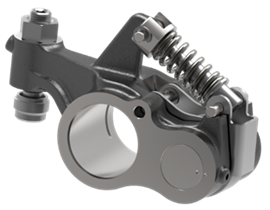 Cylinder deactivation (CDA) unit can also help to reduce engine emissions. (Photo: Eaton)
Cylinder deactivation (CDA) unit can also help to reduce engine emissions. (Photo: Eaton)
To break that paradigm, Eaton has recently introduced standalone heating units for emissions aftertreatment systems. The heaters quickly bring the catalyst portion of the system up to temperature (while the engine is still cold), which helps the system more efficiently process and reduce NOx in the exhaust stream.
“This system helps to address the infamous cold start problems with diesel engines, when they emit the highest levels of pollution,” explained Dorobantu. “And it’s really economical, it judiciously uses the vehicle’s electrical system, rather than burning more fuel.”
In the first instance, the system is intended to address new NOx regulations in California, which will require 2024 model year heavy-duty (HD) trucks to achieve a 75% reduction. This will increase to 90% by 2027.
Dorobantu said that development of the catalyst heater started back in 2017, some considerable time before the release of these ultra-low NOx emissions guidelines. “We recognized where society was moving, so we had a good idea of what would be required,” he added.
Valve Actuation
Dorobantu continued by explaining that while Eaton already has a series of technologies intended to address diesel engine CO2 emissions, a next-gen “toolbox” of products is set for imminent launch which will further reduce related GHG emissions.
Hybrid History
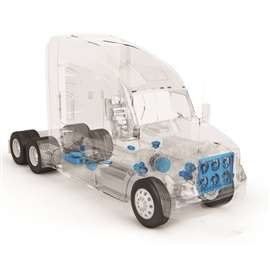 Cutaway of 48V mild hybrid systems for HD trucks (Image: Eaton)
Cutaway of 48V mild hybrid systems for HD trucks (Image: Eaton)
In 2007, FedEx ran a competition looking for the best hybrid system for a medium-duty truck. Eaton won the top prize and from that came the company’s first commercial vehicle hybrid system.
“At that time, a 4 kWh battery was a big battery,” Mihai Dorobantu explained. “That was paired with a motor of equally large dimensions. We assumed that after five or six years the batteries would need replacing, but those trucks [built between 2007 and 2014] are still on the road.”
Dorobantu went on to say that the $20,000 price tag for the battery pack was too much for the market to stand, except in China where subsidies were in place to support emissions-reducing technologies. This helped Eaton to maintain development of the system and further improve emission reductions.
“You know, a hybrid system is a full ecosystem of components,” he added. “Even how you drive, keeping the engine exhaust temperature just right, it’s all part of a successful hybridisation strategy.”
“We have done a lot of valve activation work on gasoline engines in passenger cars, but it has taken a decade to understand how that technology can be adapted for use on large-displacement diesel engines. The cylinder pressure [in the car engine] is much lower, the timing of the combustion is precisely controlled by the spark plug as opposed to compression ignition. So there were a lot of differences which had to be addressed.”
Essentially, diesels are very efficient at a specific engine speed, but efficiency quickly drops outside that narrow envelope. Eaton’s valve actuation technology helps to extend that envelope by modifying the combustion cycle so it remains within the efficiency sweet spot. That further includes variable valve timing and other features, which combined add some considerable complexity.
“The system includes changes to hardware and software,” said Dorobantu. “To adjust the valve timing you have to be able to change the cam profile, but it’s the software which decides the optimum moment to do that. You want to drive efficiency, but not to the point where it creates any unnecessary NOx.”
Engine braking systems, known as a ‘jake brake’ in the US and decompression braking in Europe, are another tool to achieving improved diesel engine economy. While past versions of these have been standalone components, Dorobantu sees these features being combined into a single control system with the goal of improving functionality - and reducing overall emissions.
Hybrid Comeback
While hybridisation is a well-known route to reducing passenger car emissions, the tech has been less successful in commercial vehicles. But such are the improvements to these systems that OEMs such as Scania are now offer hybrid HD truck models.
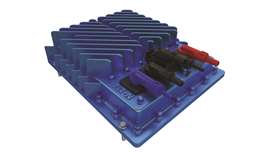 Eaton e-heater for aftertreatment systems. (Photo: Eaton)
Eaton e-heater for aftertreatment systems. (Photo: Eaton)
Dorobantu recalled that Eaton first started working on hybrid systems around 2000. Later business in the US and Europe was slow, but the tech gained some considerable traction in China. He says that today, the latest generation of that same hybrid tech is still available.
“Where the hybrid tech wasn’t originally successful in some markets, I think that new, very strict emissions standards will bring those systems back into play. Also, the only alternative is pure battery-electric vehicles, using big, heavy battery packs which reduce load capacity and take a very long time to charge.
“Consider this – you can hybridize three HD trucks with the batteries for just one pure electric truck, so it’s much more efficient in terms of battery material usage.”
It’s likely, though, that over the short term, electrification of commercial vehicles will make greater inroads in the medium-duty sector. This is because the well-proven tech from passenger cars can carryover almost unchanged, supported by delivery of components from the same suppliers.
For heavy-duty hybrids, unless a medium-duty electrical system is used, there will be a requirement for new hardware and software delivered from new suppliers. All of which will take time to develop.
“I think that the medium-duty battery-electric solution for HD hybrid trucks will still remain in play,” said Dorobantu. “You get a 33% CO2 reduction benefit from just one-tenth of the battery pack size.”
While hybridization helps to cut CO2, there’s also an argument for adding these systems to support NOx output. As cold starts are the greatest proportional cause of polluting emissions, a parallel hybrid system would allow a truck to be driven using electric power while the engine was warming up – all while a heated emissions treatment system catalysed the limited NOx produced by an engine under no load.
Meeting Targets
While Tier 3 and Euro 6 standards are broadly similar, the next sets of emissions standards are expected to deviate, where the US will demand a 90% reduction in NOx, while European standards only require a 50% reduction.
Efficiency Path
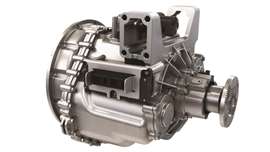 Four-speed transmission for electrified HD vehicles. (Photo: Eaton)
Four-speed transmission for electrified HD vehicles. (Photo: Eaton)
According to Mihai Dorobantu, a single-speed gearbox on an electric drivetrain can successfully collect about 50% of the available energy during a regeneration event. A multispeed transmission can increase that to above 95%, as the availability of different speeds supports the most efficient regeneration process.
“This is a 20% increase in efficiency across the overall energy cycle,” he explained. “It’s ideal for city buses, municipal vehicles making frequent stops. This effectively underlines how emissions reduction is led by efficiency. After all, the energy for that electric vehicle was produced somewhere.”
This, said Dorobantu, is because while heavy transport in the US will remain mostly diesel, strict CO2 limits in Europe will support the switch to zero-emission transport solutions, such as pure electric and hydrogen.
“A less-stringent NOx target will require less investment to meet that standard, which will leave more cash for investment in zero-emission technology. It’s a win-win for the European market.”
Of course, Eaton will be investing to deliver the technology needed to meet these targets, but Dorobantu said that the company thinks the process of targeting cuts in specific pollutants is no longer the way forward.
“As a company, Eaton believes that governments should outline specific environmental targets. Here are the climate goals, here are the air quality goals – and from there the industry can find the solution that fits. That delivers long-term targets and supports time to invent, time to invest and time to bring those solutions to market.”
This supports the apparently agnostic view of Eaton as a solution provider. Dorobantu pointed out that Eaton doesn’t have a specific goal in terms of electrification or hybridization. Instead, the company looks at the direction of the market and regulations and then tries to develop the right tech in anticipation of those changes.
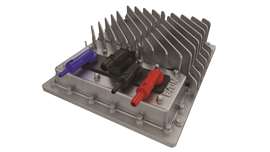 DC-DC converter for electrified vehicle powertrains. (Photo: Eaton)
DC-DC converter for electrified vehicle powertrains. (Photo: Eaton)
Case in point are the multispeed transmissions for electric vehicles. Eaton was the first company to launch these units, which in turn allowed OEMs to downsize the electric motors while improving torque output.
“Increasing power [in an EV] is easy, just deliver a higher voltage. Torque is different; it would normally mean more magnets, more copper. The transmission helps to reduce material usage, while delivering high and low speed performance and better regeneration. That leads on to efficiency, we’re investing in power electronics, power distribution, safety of the drivelines in charging and battery pack venting.
“All this tech carries over and could be adapted for heavy-duty transport solutions, including trucks and buses.”
Future Tech
In the compromise between CO2 and NOx emissions reductions, the engine turbine (via the ECU and other controls) forces the exhaust gas to be recirculated back into the cylinder intake to reduce NOx output. That relies on over-throttling the engine, which in turn generates excess CO2.
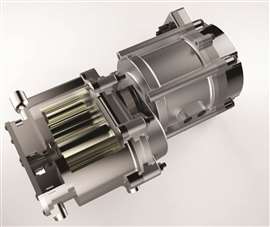 Eaton EGR pump. (Photo: Eaton)
Eaton EGR pump. (Photo: Eaton)
According to Dorobantu, throttling the exhaust to maintain pressure creates pumping losses. Using an exhaust gas recirculation (EGR) pump unit on a low-power electrical circuit can remove the need to throttle the engine, maintaining gas pressures and virtually eliminating pumping losses.
“This is more like supercharger tech,” he explained. “It’s very precise gas control that allows extraction of exactly the right quantity of gas. It’s especially effective when the exhaust and intake pressures are similar – that’s when the magic happens.”
Where a supercharger delivers pressure ratios of about 2.0 to 3.0, the EGR pump uses a shorter rotor assembly that builds pressure to only slightly above the intake pressure, or about 1.05 to 1.5.
Using the low-power EGR doesn’t directly create improved efficiency, but it does allow the exhaust and the turbo turbine to help reduce NOx – while also producing more power – and without production of excess CO2.
Editor’s note: this article originally appeared in the October - December 2024 issue of Power Progress International.
POWER SOURCING GUIDE
The trusted reference and buyer’s guide for 83 years
The original “desktop search engine,” guiding nearly 10,000 users in more than 90 countries it is the primary reference for specifications and details on all the components that go into engine systems.
Visit Now
STAY CONNECTED




Receive the information you need when you need it through our world-leading magazines, newsletters and daily briefings.
CONNECT WITH THE TEAM







